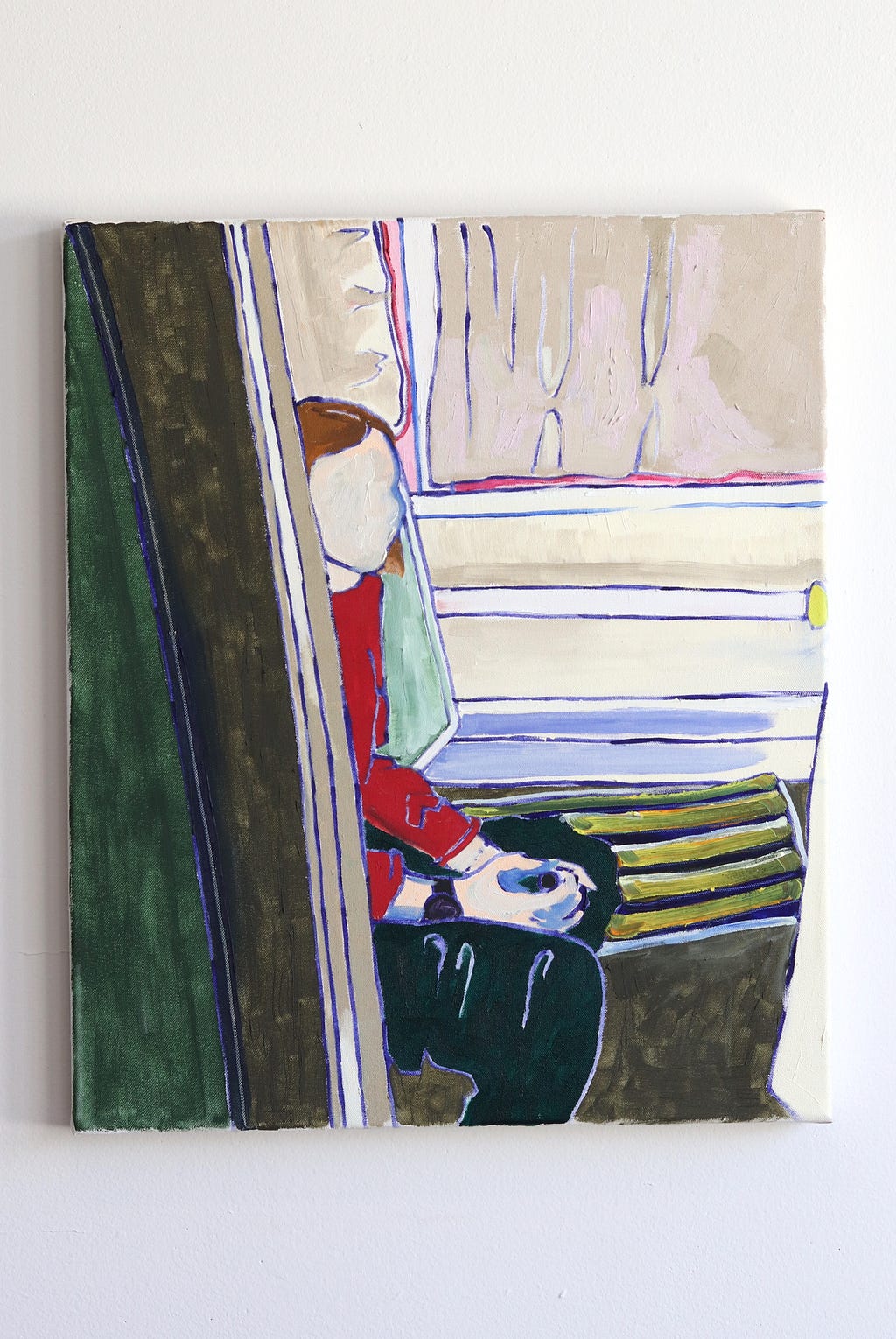This week Fuzz interviewed artist Molly Ono, ES ’20, about her practice.

Fuzz: Describe your work in 5 adjectives.
Molly Ono: Humorous, color-conscious, impulsive, instinctual, and expressive.
F: How would you describe your work to your grandmother?
MO: An investigation into being a young woman through paint.
F: Which artists are you most interested in right now?
MO: Charline von Heyl, Eva Hesse, Ana Mendieta, and Marlene Dumas.
F: Which artist informs your work most, conceptually?
MO: I’d say Helen Frankenthaler. I like the looseness with which she paints, the ideas around the drip and paint guiding form instead of the artist guiding form. When the artist is guiding paint and the paint is guiding the form — that distance is something I am really interested in currently. That kind of ‘letting go.’
F: Which artist informs your work most, aesthetically?
MO: Probably Van Gogh. I don’t think it was a conscious thing, but people say that about the work I made last summer, and the background on my phone is a Van Gogh which I look at that all the time. It’s not conscious, but I think because I see it so much it’s leaked into my brain… I’ve seen so many images of his work without being actively obsessed with him that the color choices and painting choices that he’s made have subconsciously informed me, even though I am more actively interested in contemporary women artists now than I am in his work from the 1800s.
But it’s not necessarily just artists, it’s also the ways people have presented themselves on Instagram, other social media, fashion magazines, advertising, movies… I’ve been really obsessed with Lady Bird, which is not controversial at all, but I think that sort of mood has saturated my brain.
F: What has changed most about your work in the last three years?
MO: I’ve definitely turned more towards abstraction. I didn’t really know how to do that in high school, but I’ve learned so many tools about how to approach it in a smart and interesting way since coming to college. I’ve gotten more confident in my choices of color and form, and more considerate of what I want to paint and what I want to investigate with my paintings. In high school I was just painting people because painting people was the mark of a ‘good artist,’ especially since my school was a pretty weak in the arts. Back then I would paint pretty dumb stuff, just because I knew I could, like fleshy flowers and skeletons, very teenage things.
F: What is the most challenging aspect/stage of your practice?
MO: There’s kind of this turning moment where you think you have a handle on it, and the piece starts to approach this state where you can feel it coming together. It’s that moment of preciousness. There’s this very sensitive zone at some point, like three-quarters of the way through the piece, where you realize you could so easily mess it up, and that’s the scariest part.
Conversely, there are times when you’re making a painting and it looks really good, but you know that it’s not quite finished and you don’t know what to do from there. It becomes a kind of problem to solve. That can be very difficult because you could so easily make the wrong move, and then it looks worse and becomes even a larger problem. I’ve gotten into this negative feedback loop where I keep working and working and it looks worse and worse.
F: What music do you listen to while painting?
MO: The other day I was listening to my party playlist, so I think I was listening to T-Pain. I’ve been listening to “I’m Sprung” a lot, I had that song stuck in my head continuously the other day.
F: What is the next step for your work?
MO: I’m considering very heavily the legacy of female artists right now and wanting to investigate more queer art, which maybe is not my sphere to look into, but it’s so closely linked to feminist art that it’s hard to separate from that. Along that vein I’ve been interested in the role that men have been playing in my life and how they’ve affected me. I’m doing a set of paintings right now that are text messages I’ve received from men that I’ve been involved with in the past. I like the idea of repackaging it as my artistic work, versus just language they’ve sent me.
Artist Portrait: Molly Ono was originally published in The Yale Herald on Medium, where people are continuing the conversation by highlighting and responding to this story.
